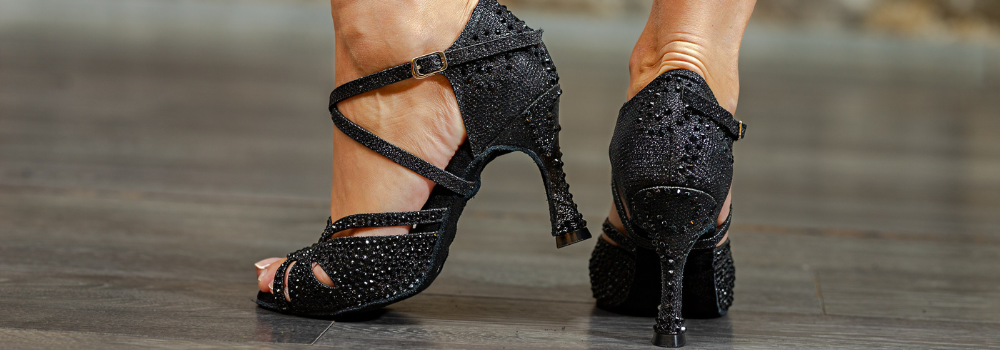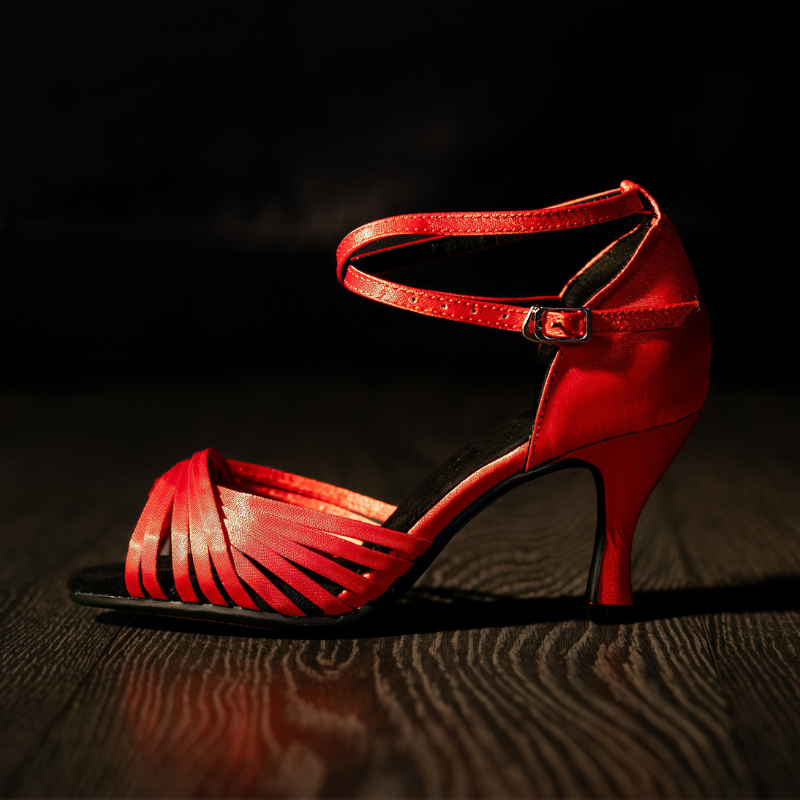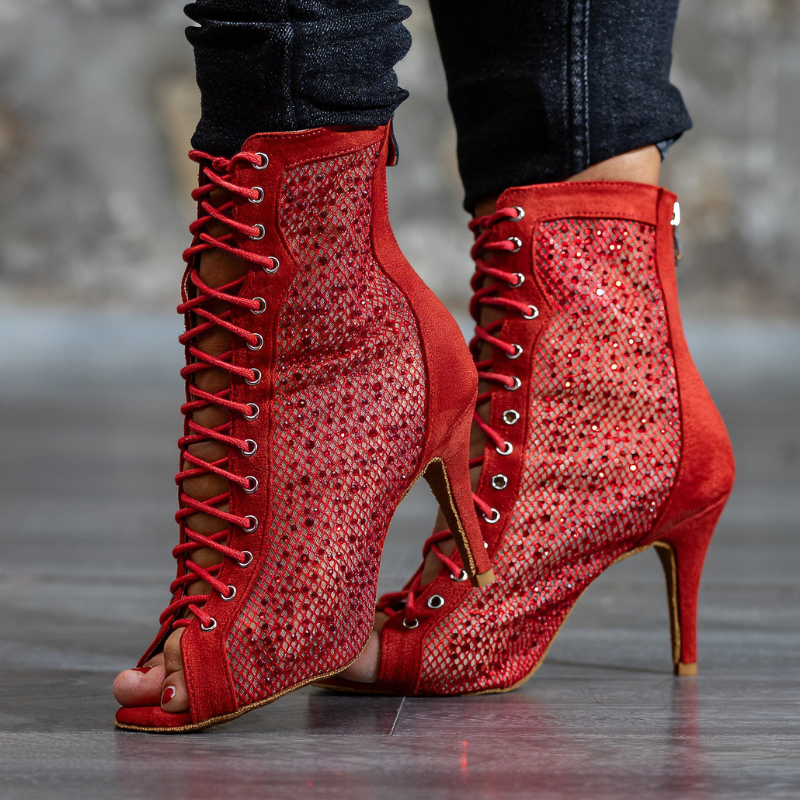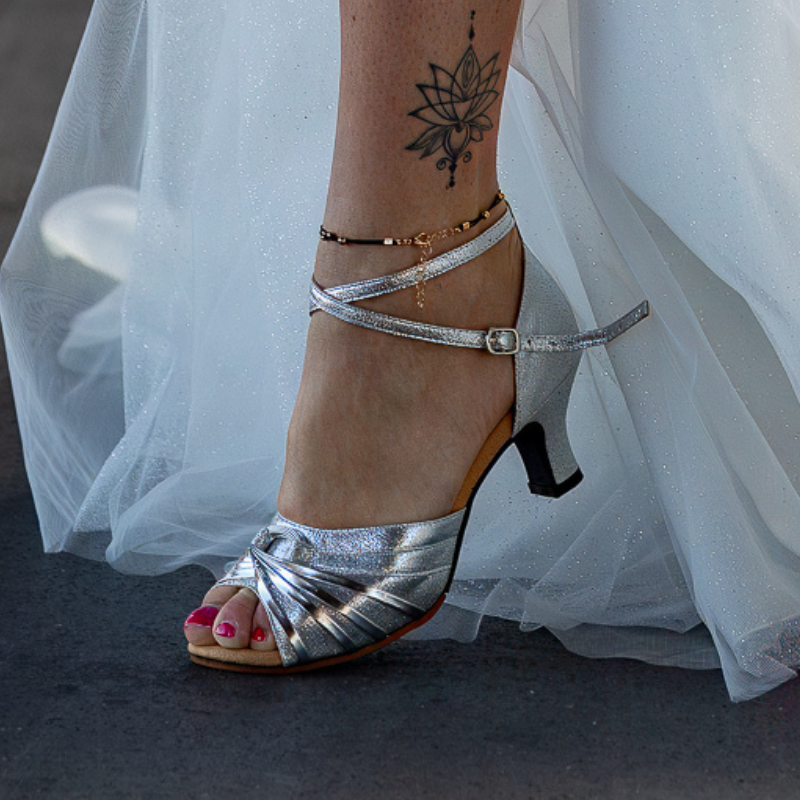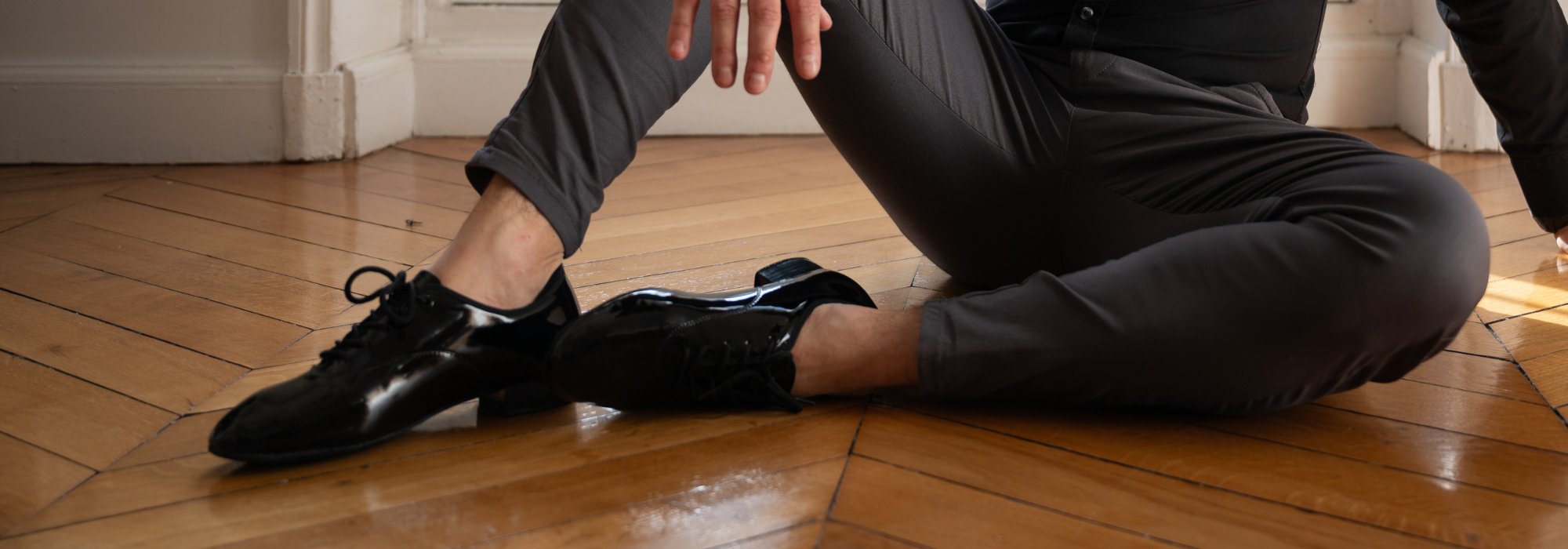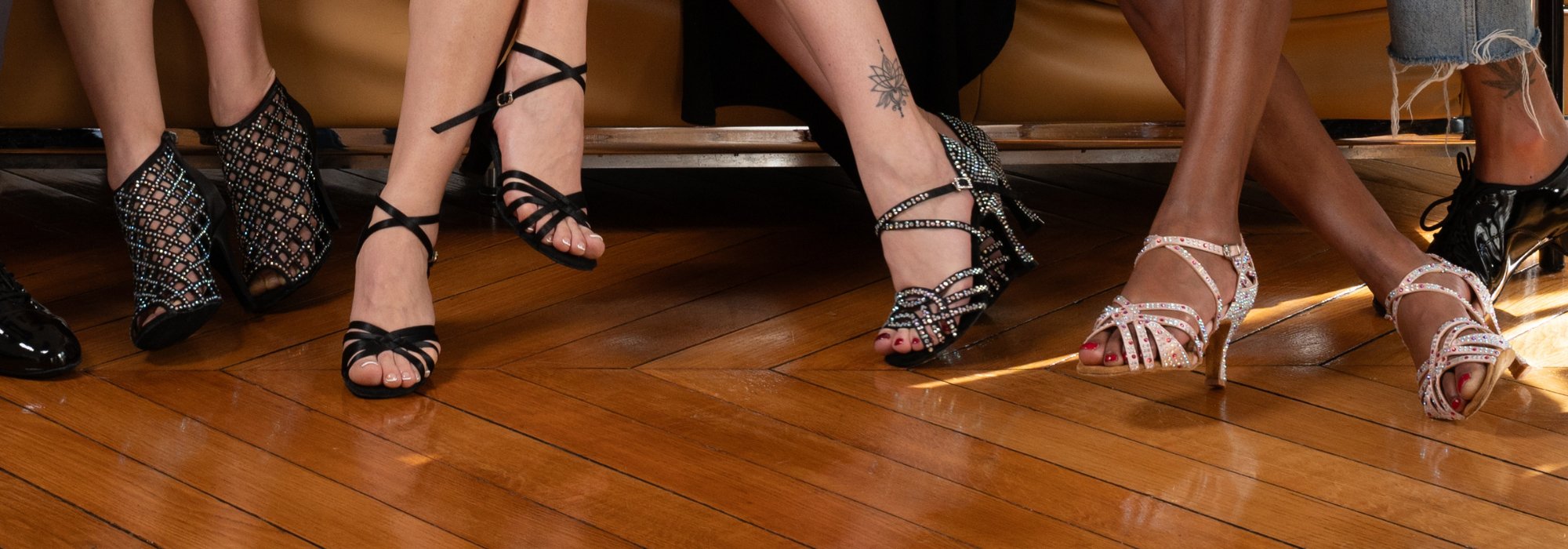Dance Shoes Maintenance Guide
You are passionate by dance and want take care of your shoes To maximize your performance? Wondering how to maintain them so that they last longer and stay in perfect condition?
This guide is for you!
Dance shoes, whether designed for salsa, bachata, kizomba or tango, are not simple accessories. They are essential to perform your movements with precision, elegance and safety. However, their maintenance is often overlooked, to the detriment of their sustainability and your comfort.
After each dance session, clean your shoes with a damp cloth to remove dirt. Then apply a thin layer of shoe polish suitable for the color of your shoes (or colorless polish). Leave on for 30 minutes, then shine for a brilliant result and sustainable protection.
In this guide, you will discover:
- Why is it crucial to maintain your dance shoes.
- The best techniques for cleaning the soles, the interior and the outside.
- How to improve their comfort and extend their lifespan.
- Tips to make them more efficient on different tracks.
Ready to transform your shoes into real dance allies? Let's dive together in this complete guide!

Why maintain your Latin dance shoes?
1. PRESERVER REVENING
THE Latin dance shoes, whether it be salsa, bachata, kizomba or tango, are not simple accessories. These are essential tools For Optimize your performance on the track. Their maintenance is crucial to guarantee their longevity and maximize your investment. Indeed, well -maintained shoes can last years while retaining their aesthetics and their effectiveness.
2.Minteent flexibility and adhesion
In Latin dances, the flexibility of shoes is essential. It allows fluid transitions between movements and a full expression of complex steps. Certain soles such as suede, offer perfect adhesion to pivot without sliding or blocking. However, without regular maintenance, dirt can accumulate and make the soles slippery.
3. Avoid the inconveniences on the track
Dance tracks in clubs or social evenings are often poorly maintained. Residues, liquid and dust accumulate there and Quickly damage the soles. Poor shoe hygiene can not only reduce their performance but also wound like twists or falls.
Adopt a routine to extend their lifespan!
Clean the soles After each use And ventilate allows you to limit the damage caused by humidity and dirt. Using a special sole brush is the most effective method To eliminate residues and restore their grip.
Extend the life of your dance shoes thanks to our Dance shoe brush - The essential tool for optimal maintenance!

How to clean your dance shoes?
A.NETTOYY DAIM or Sweden soles
THE suede soles (Popular enough for Latin dance shoes) require specific maintenance to maintain their grip and flexibility.
-
Special Brush for Dance Shoes
-
A brush Equipped with metal spikes Allows you to effectively remove the dirt encrusted in the suede fibers.
-
Method : Brush by performing short and fast movements from the center to the outside of the sole. Press firmly but without excess to avoid damaging the material.
-
Alternative: sandpaper or dry concrete
-
If you don't have a special brush, use a sandpaper (Minimum grain: 80) or gently rub your shoes on a dry concrete surface. This can help out, but does not replace a suitable brush.
-
Precautions:
-
Avoid damp or dirty surfaces.
-
Never clean the suede with water, at the risk of hardening the sole.
B.Nettoy the upper part of the shoes
-
Depending on the material
-
Daim or Nubuck : Apply a protective spray and clean with a soft brush.
-
Leather : Use a damp cloth with a special leather soap, followed by a nourishing balm to prevent drying.
-
Satin : Clean gently with a damp cloth and a soft soap. For stubborn stains, use a mixture of water and white spirit, testing on an unspeakable area.
-
Avoid abrasive products or containing acid To preserve the integrity of materials.
C. Clean the interior of shoes
-
Eliminate odors
-
Sprinkle baking soda or insert softening leaves for fabrics overnight.
-
Spray a mixture of water and essential oil for a fresh perfume (make sure to choose an oil suitable for the skin).
-
Ventilate
-
Take your shoes out of their transport bag and let them dry in the open air in a dry place.
D. Maintain the shoes in good condition
-
Clean them after each use to prevent dirt from getting stuck permanently.
- Store them in a breathable bag, avoiding wet environments.
How to make slippery shoes to dance?
Latin dance shoes (salsa, bachata, kizomba, tango) require a perfect balance between grip and slide to execute fluid movements. If your shoes become too sticky or adherent, Here are some solutions to give them gliding.
A. Use talc on the track
Talc is a simple and effective solution to improve the sliding of your shoes, especially on sticky floors (bars, nightclubs).
-
User manual
-
Pour a small amount of talc on the edge of the track (avoid the center so as not to hinder other dancers).
-
Place your shoes on the powder and make small pivots to distribute a thin layer under the soles.
-
Practical advice
-
Check if the talc is authorized in the dance site.
-
A small amount is enough to find a good slide without risking losing control of its movements.
-
Benefits
-
Protects the soles of dirt and sticky liquids present on the slopes.
-
Easy to take away and use discreetly.
B. Brush the suede soles
A suede sole Well maintained offers an ideal natural glide. If your soles hang, a simple brushing may be enough.
Method
-
Brush your soles with a Special metal brush, by performing short and firm movements.
-
Insist on the most stressed areas (usually in the forefoot).
C. Other tips for improving skiing
-
Sandpaper
-
If you don't have a brush, gently rub your soles with sandpaper (grain of 80 minimum). This eliminates the dirt encrusted and makes your soles smooth.
-
Specific sliding spray
-
Some Dance shoes sprays are designed to improve gliding on special surfaces. Apply a thin layer following the product instructions.
D. Alternative floors to optimize gliding
-
If the dance floor is too sticky, favor areas where the soil is cleaner or smooth.
-
Bring a piece of lino Clean that you can place on the ground to create an adapted dance zone.
How to make dance shoes more comfortable?
Comfort is a key element to perform on the dance floor, especially during long salsa, bachata, kizomba or tango sessions. Well -adjusted and comfortable shoes Reduce fatigue And prevent pain.
Here's how to increase the comfort of your dance shoes:
A. Adjust the interior
-
Add depreciation soles
-
Use gel or foam soles specially designed for dance shoes.
-
They absorb shocks and reduce pressure on the plantar vault.
-
Delete pressure points
-
Identify the areas where your feet feel discomfort.
-
Place silicone pads or adhesive dressings to protect sensitive areas.
B. Adapt the shoes to your feet
-
Use an impact
-
Place an adjustable trucker in your shoes to help them perfectly marry the shape of your feet.
-
This method is ideal for slightly widening areas that are too tight without damaging the materials.
-
Thick socks to soften
-
Wear your shoes with thick socks for a few hours at home for gradually.
C. Protect heels and toes
-
Install protective bags for heels
-
THE Silicone tips extend the lifespan of heels while absorbing the impacts.
-
They also avoid premature wear due to friction on rough floors.
-
Cover the toes with protective protectors
-
Fabric or gel mushrooms or gels prevent friction and bulbs, especially during intense movements.

How to expand dance shoes?
Latin dance shoes (salsa, bachata, kizomba, tango) must be perfectly adjusted to offer comfort and performance. However, some shoes are too tight.
Here are the Best techniques To expand your dance shoes in safe :
A. Home methods
-
Use thick socks
-
Wear your shoes with thick socks and walk at home for 1 to 2 hours.
-
This gentle method allows Relax the materials gradually.
-
Use a hair dryer
-
Heat the tight areas with a medium temperature hair dryer For 20-30 seconds, moving your feet to stretch the materials.
-
Let the shoes cool on your feet so that they keep their new form.
-
Use an adjustable truck
-
Place an impact in your shoes and gradually adjust it to Stretch tight areas.
-
Leave the hire in place for at least 24 hours For an optimal result.
B. Professional alternatives
-
Have your shoes expanded to a shoemaker
-
If your shoes are particularly rigid or fragile (satin, delicate leather), Consult a specialized shoemaker.
-
He can use tools and specific products To expand your shoes without risk of damaging them.
-
Falloring sprays for leather
-
Apply a softening spray On the tight areas, then wear your shoes to allow them to adapt to your feet.
-
Be sure to choose a compatible product With the material of your shoes.
C. Precautions to take
-
Do not force enlargement
-
Avoid stretching your shoes excessively, this could damage their structure Or reduce their support.
-
Respect materials
-
THE satin or leather shoes delicate require more precautions than those in rigid leather or suede. Always consult manufacturer's recommendations.
-
Show patience
- Progressive widening is safer and more sustainable. Too fast methods are likely to weaken shoes.

Protect your shoes, improve your performance!
We went around the best Dance Shoes Maintenance Guide.
Now you know how to clean your soles, preserve the elasticity and adhesion of your shoes, and even make them more comfortable. These tips allow you to extend the lifespan of your shoes while ensuring optimal performance On the track.
Remember, every detail counts: whether it is a simple cleaning after a session or theUse of a special brush To restore your soles, your daily habits will make all the difference.
Why wait? Give your shoes the maintenance they deserve to enhance each step. To do this, you can find our Dance shoe brush now!

